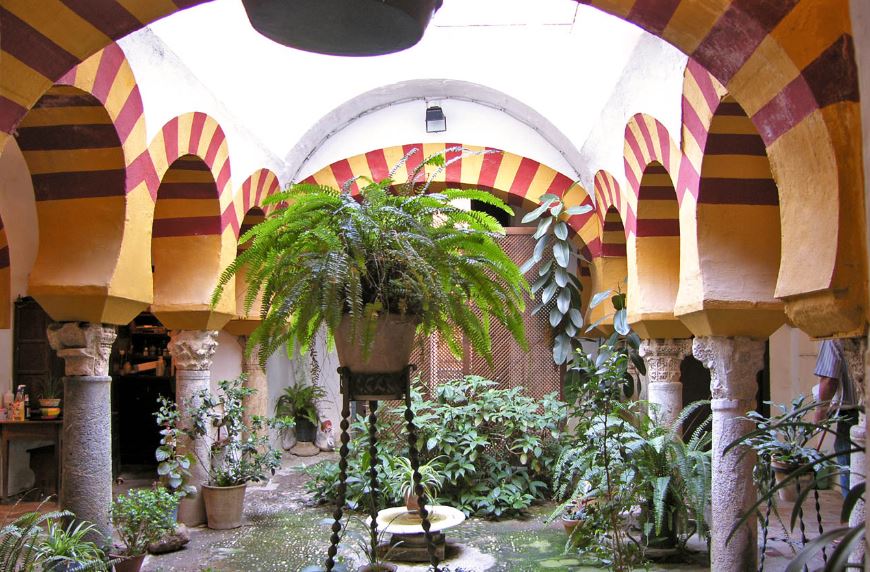
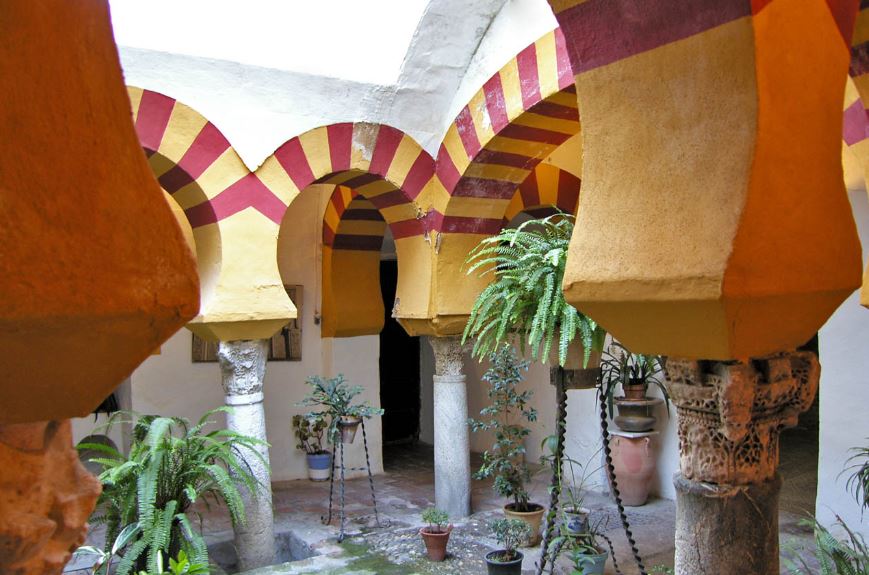
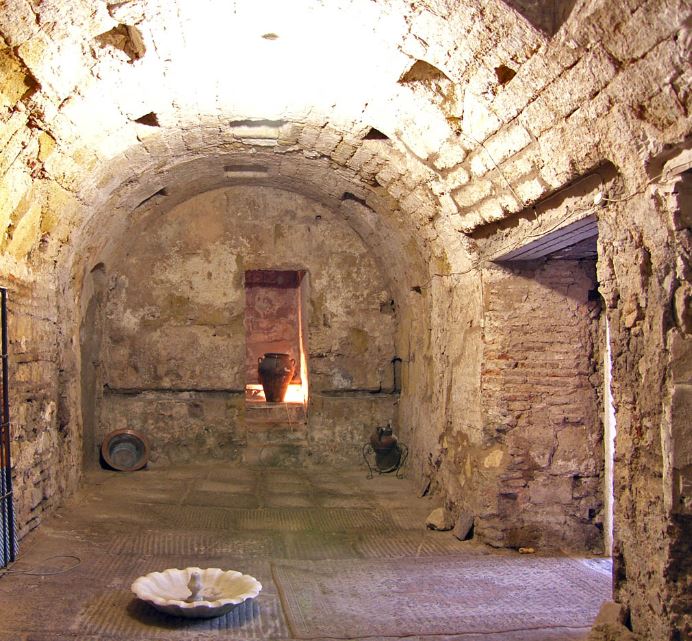
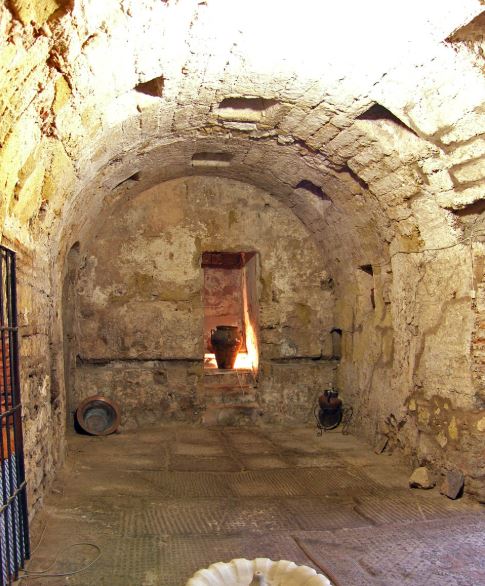
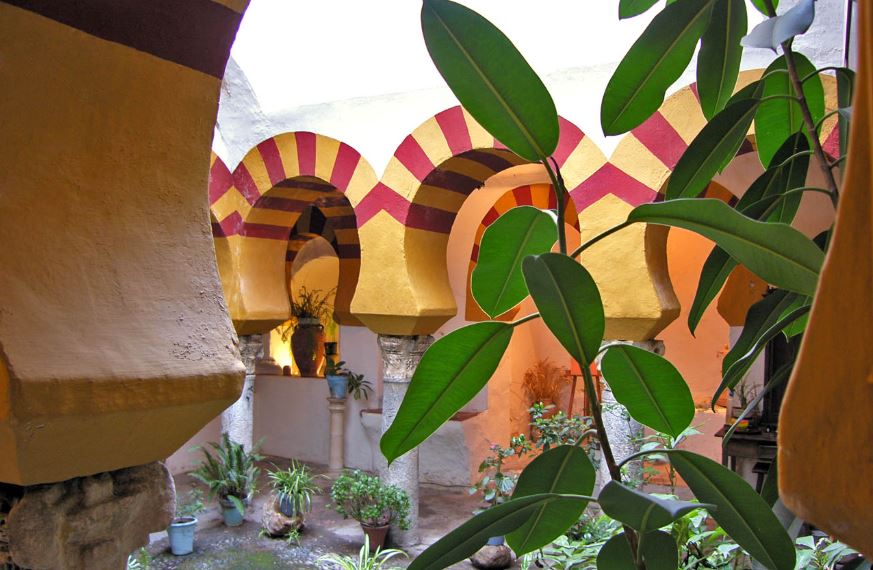
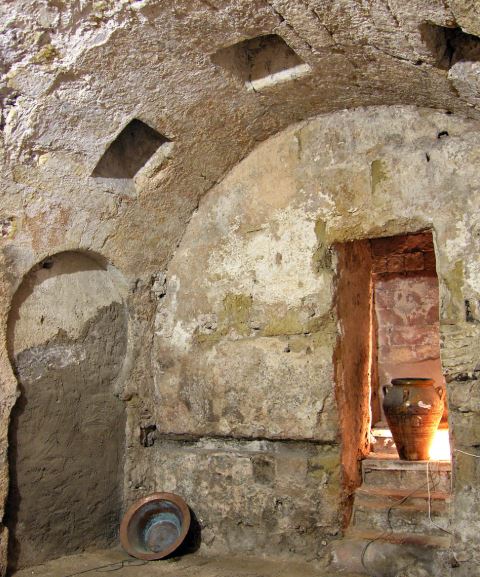
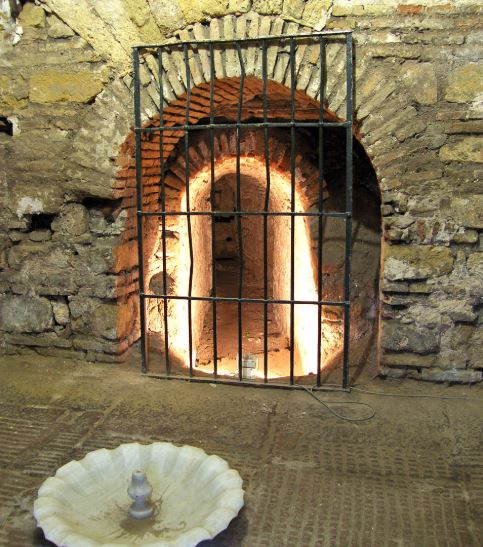
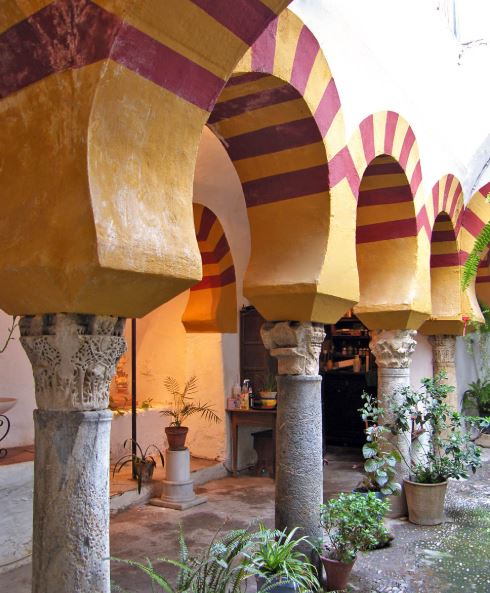
Chronology. 11th century
Style. Mudéjar
Description.
The Arab baths of Santa María, located in the neighborhood of the Jewish quarter of Córdoba, were public baths which are one of the few preserved examples of a very popular and abundant type of building in the Muslim Córdoba, with durations in the Christian culture of modern times. It was declared an Asset of Cultural Interest on April 30, 2001, and forms part of the historic center of Córdoba that was declared a World Heritage Site by Unesco in 1994. Its main access is by Velázquez Bosco street, numbers 8-10, although it also has an entrance through Céspedes street, number 11. They were built during the Caliphate period and were rebuilt in the fourteenth century by Mudejar builders. At present, the best-preserved parts of the old baths are three vaulted rooms corresponding to the "frigidarium", the "tepidarium" and the "caldarium", as well as the cistern. The first references of this space are given after the conquest of the city by Fernando III in 1236, who gave them to the House of Cordoba, specifically Domingo Muñoz el Adalid. In 1380, the then lord of said house gave the property of the baths to the Cabildo de Córdoba in exchange for an urgent restoration in it.
The church, from then on the owner of the baths, called them baths of Santa Maria. Those responsible for several modifications undertaken in them in 1329 were two Mudejar alarifes that manufactured a new boiler. The last works of which there is evidence date from 1524, in which the boiler was repaired taking advantage of the remains of the caldera of the San Pedro Baths. The exploitation of the baths was soon given by the Cabildo to individuals; once abandoned its use as bathrooms, the Cabildo leased it as a neighbor's house. The oldest lease document as housing dates back to 1611. Finally, in the eighteenth century, the reform was undertaken which involved the destruction of the central vault of the "tepidarium" to convert the room into a courtyard, as well as the elevation of the original level of the floor, the suppression of two columns and the opening of a door to Velázquez Bosco street. In the mid-twentieth century, the ownership went to the counts of Cañete de las Torres, current owners of the site, who offer flamenco shows daily in the old baths.
Rate us and Write a Review
Address: Calle Velázquez Bosco, 8, 14003 Córdoba

0 Reviews